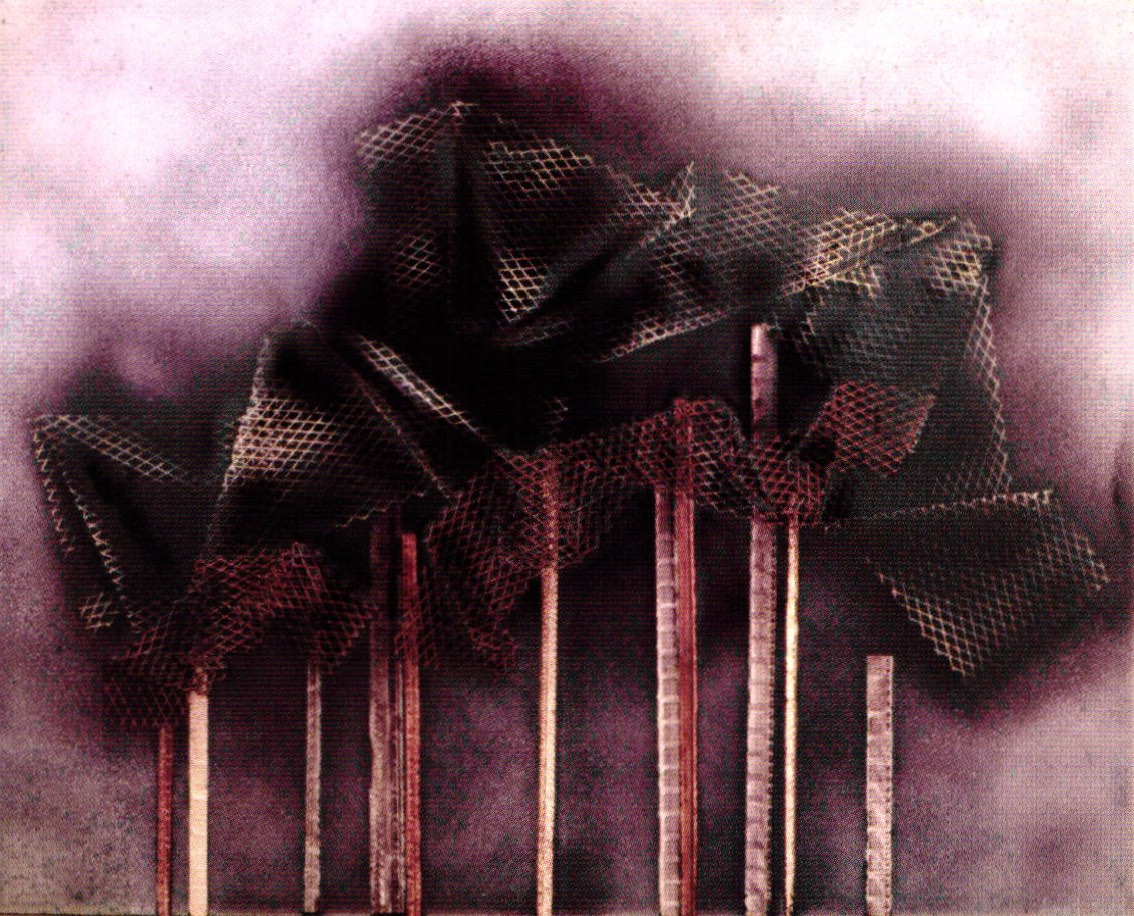

Layered Metal on Enamel Coats
4 Minute Read
While the tide might seem to have been chosen to be catchy or thought to be frivolous in nature, it actually addresses just what I have been doing with both materials for the last 15 years. I have been firing a coat of transparent enamel onto copper and then firing thinner pieces of fine silver and copper on top of that base coat and covering the metal with more transparent enamel to create my designs.
Many of you have done this with metal foils, of course. The difference here is that the metals I have been using are thicker than the foils generally used by enamelists and the techniques are different as well to accommodate the greater thickness of the metal. I use sifting to get the enamel onto the copper and foil and wet inlay for touch-up work. The pieces pictured in this article have been done on 18 gauge copper that was first sifted with enamel and then fired sufficiently to bring the enamel to maturity. The pieces were then counter enameled, and all are done with transparent enamels.
I began working with .005 inch fine silver (36 gauge) because that metal could be textured more easily and it would hold the texture without the crinkling that results with the thinner metal foils. I was tired of that crinkly aspect of the thinner foils. A rolling mill was often used to thin the silver or to texture it. The biggest hazard in working with fine silver is that the temperature and time of the firing must be controlled to prevent the silver from going into solution. This is particularly important when you are firing silver over an enameled copper base. Avoid the eutectic point at all costs. Gold can also be used although the cost is high, particularly in larger pieces.
When the price of silver went up precipitously, I began experimenting with various thicknesses of copper foil, and then with expanded copper mesh and copper electrical wire. Sifting techniques can still be used, although the sifting and firing have to be adjusted so that fire scale is kept under control. The copper foil can be textured using embossing tools and techniques. I have even crumpled the copper into a loose ball shape and then straightened it out so that it had an overall wrinkled texture.
I have adhered the metal onto a pre-fired enamel surface, sifting more enamel over the wrinkled copper and fired it. I have even gone back to a piece made that way and added embossed metal shapes which are then enameled. The electrical wire is very effective in making trees because the wire is already twisted which can make the trunk of the tree while the branches and roots can be made by pulling the wire apart and untwisting it into the desired shape.
When working with copper foil, the metal is coated on both sides with enamel and fired just enough to attach the foil to the underlying coat of enamel on the pre-enameled piece. The enamel adhering to the copper foil or wire is under-fired. More enamel can be added, and with subsequent firings at a temperature sufficient to mature the enamel, the piece may be brought to completion. If both sides are not enameled, the foil has a greater tendency to curl up, particularly at the edges. Fine tweezers can be used to handle the foil.
The copper foil that is easiest to texture is 1 mil (.02540 mm) in thickness. I have experimented with 1.4 mil foil which also works well. The thicker copper is easier to handle; the thinner copper is easier to tool or emboss, and the resulting texture is more pronounced. Some pieces have copper screen which can give interesting textures and effects.
Enamel is sifted onto the screen, taking care to cover all exposed copper. Klyr Fire holds the enamel in place until it can be fired, and when sufficiently covered, the screen can be placed on the previously-enameled surface. At this point I sift more enamel over the screen and its underlying surface. The piece is under-fired at first to minimize the formation of fire scale on the screen. More enamel can then be sifted or laid on with a brush on the thin spots, and the piece fired again, but high enough to mature and clear the enamel.
If attention is paid to the properties of the metal and enamel, and the enamelist has good control of the sifting and firing processes, the possibilities are many. The materials and techniques can be used to make small jewelry items as well as plates, bowls and wall pieces. Using copper creatively is a way of fighting back against the rising costs of metals and still getting results that are uniquely beautiful.
You assume all responsibility and risk for the use of the safety resources available on or through this web page. The International Gem Society LLC does not assume any liability for the materials, information and opinions provided on, or available through, this web page. No advice or information provided by this website shall create any warranty. Reliance on such advice, information or the content of this web page is solely at your own risk, including without limitation any safety guidelines, resources or precautions, or any other information related to safety that may be available on or through this web page. The International Gem Society LLC disclaims any liability for injury, death or damages resulting from the use thereof.
Related Articles
Comparing Buff Prep Methods
The Plique a Jour Technique with Torch
CORAL & ANGELFISH 6 – final
Electroplating Safety Precautions
The All-In-One Jewelry Making Solution At Your Fingertips
When you join the Ganoksin community, you get the tools you need to take your work to the next level.
Trusted Jewelry Making Information & Techniques
Sign up to receive the latest articles, techniques, and inspirations with our free newsletter.